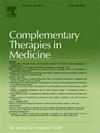与振动刺激相比,冷却糖尿病患者指尖对血糖针疼痛的影响:一项交叉试验研究。
IF 3.5
3区 医学
Q1 INTEGRATIVE & COMPLEMENTARY MEDICINE
引用次数: 0
摘要
导读:使用血糖仪测量血糖会因针头插入而引起不适。实施有效的疼痛管理策略对于减轻这种不适至关重要。本研究旨在探讨冷刺激和振动刺激对糖尿病患者插入血糖仪时疼痛感知的影响。方法:来自伊朗哈马丹市Shahid Beheshti医院的60例糖尿病住院患者参与了一项交叉研究,其中3例为1型糖尿病,57例为2型糖尿病。该队列包括40名男性和20名女性,年龄从18岁到70岁不等,平均年龄55.7岁。糖尿病的平均病程为10年。研究设计由六个模块组成,每个模块包含三种干预措施:振动刺激(A)、冷疗法(B)以及两者的组合©。干预顺序(ABC、ACB、BCA、BAC、CBA和CAB)随机分配。每个参与者在三个不同的时间接受干预:早餐前、午餐后一到两个小时和晚餐。随机选择一只手进行干预,而另一只手作为对照,只插入针头。采用数值评定量表(NRS)对双手进行疼痛程度评估。结果:与对照组相比,单手接受振动刺激的参与者报告疼痛强度显著降低,平均差异为1.21 (p < 0.001)。相比之下,冷疗法对疼痛强度无显著影响,平均差异仅为0.06 (p < 0.05)。振动和冷疗法的结合也没有显著改变疼痛强度,平均差异为0.33 (p < 0.05)。干预措施之间存在显著差异(p = 0.002),表明对疼痛强度的影响不同。结论:振动刺激可有效减轻血糖仪穿刺疼痛。在研究的方法中,振动刺激被证明是最有效的减少针痛。鼓励临床医生将这项技术纳入糖尿病患者的护理中,以提高他们在血糖监测期间的舒适度。本文章由计算机程序翻译,如有差异,请以英文原文为准。
Impact of cooling diabetic patients’ fingertips compared to vibrating stimulation on pain from the glucometer needle: A cross-over trial study
Introduction
Blood glucose measurements using glucometers can cause discomfort due to needle insertion. Implementing effective pain management strategies is essential to alleviate this discomfort. This study aimed to evaluate the effects of cold and vibration stimulation on pain perception during glucometer needle insertion in diabetic patients.
Methods
Sixty diabetic inpatients from Shahid Beheshti Hospital in Hamadan, Iran, participated in a crossover study, comprising 3 individuals with type 1 diabetes and 57 with type 2 diabetes. The cohort included 40 males and 20 females, with ages ranging from 18 to 70 years and a mean age of 55.7 years. The average duration of diabetes was 10 years. The study design consisted of six blocks, each containing three interventions: vibration stimulation (A), cold therapy (B), and a combination of both C. The sequences of interventions (ABC, ACB, BCA, BAC, CBA, and CAB) were randomly assigned. Each participant received the interventions at three different times: before breakfast, one to two hours after lunch, and at dinner. One hand was randomly selected for the intervention, while the other served as a control, with only the needle inserted. Pain levels were assessed using the Numeric Rating Scale (NRS) for both hands.
Results
Participants receiving vibration stimulation in one hand reported a significant reduction in pain intensity, with a mean difference of 1.21 (p < 0.001) compared to the control hand. In contrast, cold therapy did not significantly affect pain intensity, showing a mean difference of only 0.06 (p > 0.05). The combination of vibration and cold therapy also did not significantly alter pain intensity, yielding a mean difference of 0.33 (p > 0.05). A significant difference (p = 0.002) was noted among the interventions, indicating varying effects on pain intensity.
Conclusion
Vibration stimulation effectively reduces pain associated with glucometer needle insertions. Among the methods examined, vibration stimulation proved to be the most effective for minimizing needle pain. Clinicians are encouraged to incorporate this technique into the care of diabetic patients to enhance their comfort during glucose monitoring.
求助全文
通过发布文献求助,成功后即可免费获取论文全文。
去求助
来源期刊

Complementary therapies in medicine
医学-全科医学与补充医学
CiteScore
8.60
自引率
2.80%
发文量
101
审稿时长
112 days
期刊介绍:
Complementary Therapies in Medicine is an international, peer-reviewed journal that has considerable appeal to anyone who seeks objective and critical information on complementary therapies or who wishes to deepen their understanding of these approaches. It will be of particular interest to healthcare practitioners including family practitioners, complementary therapists, nurses, and physiotherapists; to academics including social scientists and CAM researchers; to healthcare managers; and to patients. Complementary Therapies in Medicine aims to publish valid, relevant and rigorous research and serious discussion articles with the main purpose of improving healthcare.
 求助内容:
求助内容: 应助结果提醒方式:
应助结果提醒方式:


